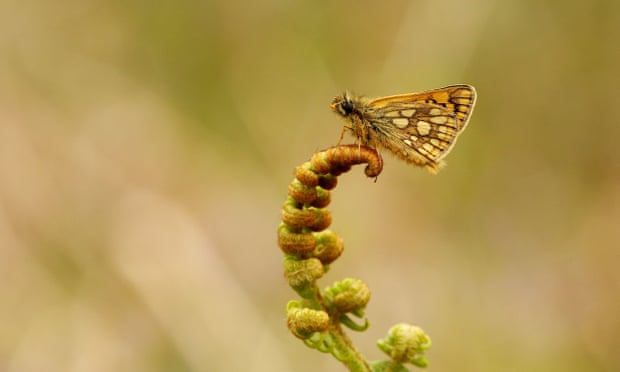Let's start off with a dragonfly, one I spotted sheltering in the long grass at the side of one of the lakes at Blashford.
This is a black-tailed skimmer, probably a female or an immature male due to the lack of clear anal appendages. This species was first recorded in the UK in 1934 but is now a common species. It is thought the creation of gravel pits is a factor in their increase as they like extensive open unvegetated areas.
Like much of the UK, the most common dragonfly or damselfly species locally is the common blue damselfly.
This species lives in a wide range of habitats from small ponds to rivers but is especially common around lakes and reservoirs.
There are just two species of damselfly in the UK which have obviously coloured wings- they belong to the Calopteryx genus and are a type of damselfly known as demoiselles1.
The more common of these two species is this one, the banded demoiselle. The spots on the wings start of as dark brown in immature males before developed into the black of adults.
The other species is slightly less common, though is still fairly abundant and is the beautiful demoiselle.
This similar species is generally only found in the west of the UK2.
I haven't seen that many moths yet this year but I did see one of the easiest to spot and identify, the cinnabar moth.
As usual in nature, the bright markings are a warning to potential predators. They eat ragwort, a plant which is poisonous to mammals and unpleasant for birds to eat3.
Some moths are much harder to spot but if you look in the hedgerows and bushes you can spot all sorts of interesting species.
This is a yellow-barred long-horn moth. This is a day-flying moth and you can tell from the pale tips to it's antennae that this individual is a female. Male antennae are actually twice as long as female antennae which seems ludacris- the antennae on males are four-times longer than the moth itself!
I am also discovering new insects I haven't seen before and they are endlessly fascinating. You might assume this species is some form of ladybird at first glance but when you more closely it doesn't seem to fit the bill.
This is actually a red and black froghopper. Like the cinnabar moth, the markings highlight it's unpleasant taste to predators. This froghopper mainly gets its food from sucking the vegetable juices of grasses. It can both fly and jump up to 70 centimetres.
A beetle next and this is a garden chafer.
I couldn't find much information about this beetle but I am intrigued by it's look- you don't see many insects with such different colored wing casing to the rest of the body.
I'm seem a couple of interesting looking flies lately too.
This fly belong to the genus Tenthredo and like many insects has the markings of a wasp despite being completely harmless.
This one is of the genus Panorpa which means it's a type of scorpion fly. These are so called because the males have what looks like a scorpion tail but is actually claspers for mating- this individual is a female4. Scorpion flies scavenge dead insects are regularly steal food which is trapped in spider webs. Males are often killed by the females when they mate so they placate females with a present of a dead insect or a mass of saliva.
To conclude, here are some recent photos of two more insects I've discussed on the blog before:
 |
| Swollen-thighed beetle |
 |
| Roesel's bush cricket |
That's all for today but there will be more next week with a focus on the larger wildlife I've seen lately.
Thanks also to Chris Brooks on ispotnature.org for confirming the identities of many of these species.





















































